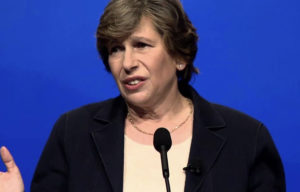NEA offers master class in Critical Race Theory without naming it
Despite repeated denials of supporting the teaching of Critical Race Theory in public schools, resources from America’s largest teachers’ union suggest otherwise.
The agenda at the National…

Despite repeated denials of supporting the teaching of Critical Race Theory in public schools, resources from America’s largest teachers’ union suggest otherwise.
The agenda at the National Education Association’s “Conference on Racial & Social Justice” in July, for example, featured workshops on “Applying a Racial Equity Lens,” “Racial Justice in Education Framework Principles” and “Recommendations and Conclusions for Talking About and Centering Race.”
The conference was structured under the headings of “Learn More” and “Do More” with the former establishing the framework for activism in support of the latter.
“LGBTQ+ inclusivity and identifying implicit racial bias and microaggressions” joined with a litany of other grievance-oriented topics such as “Stereotypes Resources” and instruction on how to build a “Racial Justice in Education Framework.”
The entirety of the conference material is an unabashed recitation of the tenets of CRT, without once mentioning it by name.
The teaching of CRT in public schools prompted substantial pushback over the last few years from parents, who demanded schools immediately remove the highly controversial construct from curricula.
Some school systems attempted to defend CRT, while far more simply denied teaching it at all.
According to CRT, racism is everywhere, in everything, and it must be combatted through “anti-racism,” which advocates for constant introspection of implicit racial bias, identification of systemic racism and admission of white power and privilege, along with identifying oppressor-oppressed dynamics in society.
Policies that flow out of this way of thinking aim for “equity,” an indefinable goal that has substantively replaced equality as a desirable social good.
Equality is neutral, offering its blessings equally. Equity is freighted with explicit bias, a mechanism for settling scores by taking from an oppressor that which the oppressed believes would be theirs, but for the racist conduct of others.
It’s this mind-bending construct that instructs white children as early as preschool that they are inherently racist simply because they are white. It emphasizes a corollary as well – that minorities cannot be racist themselves because they haven’t yet had the upper hand to put that hatred into practice. Of course parents were outraged.
However, parents soon discovered CRT wasn’t a class, or a discrete module of study within a larger subject, but instead a partisan ideological movement marching through the academy, a philosophy suffusing all aspects of the educational experience, from curricula to teaching methods, in all subjects, at all times.
The ubiquitous nature of CRT meant its scope of effect was unbounded. Specific instances of objectionable material occasionally bubbled up, like lava from a volcano. But like the volcano, the real power remained beneath the surface, informing, guiding, directing and, some would say, poisoning the entire educational structure until eventually, little else but CRT will remain.
Educators across the nation have claimed not to teach CRT, but a few minutes spent at the website of the nation’s largest teachers’ union, the NEA, calls those denials into question. The imprint of CRT is evident to some degree in every initiative and program of the NEA.
From the radical, in-your-face embrace of anti-whiteness revealed in the webpages of its Racial and Social Justice division, to the softer, more concealed bias found in the host of teacher training resources, the whole forms a masterclass on Critical Race Theory – again, without once mentioning it by name.
At the head of each webpage, the NEA places a background statement followed by bullet points.
“NEA has a vision for every student. We know that institutional and structural racism are barriers to achieving our vision. We will leverage the power and collective voice or our members to end the systemic patterns of racial inequity and injustice that affect our Association, schools, students, and education communities,” one statement reads.
From the “Principles of a Racial Justice Framework”:
- Our collective work must dismantle white supremacy, and ensure that bigotry and discrimination based on gender, sexual orientation, disability, or national origin are not part of our Association, classrooms, educational curricula, classroom management, school policies, and discipline practices. [emphasis mine]
- Programs, campaigns, and projects must be driven by goals that are clearly outlined, tracked, and measured, and that have accountability systems that explicitly promote racial justice. [emphasis mine]
The second bullet point violates the first point’s prohibition against bigotry and discrimination, but unironically demands it anyway.
A later bullet point doubles down, revealing a stunning lack of self-awareness:
- We must work to dismantle discipline systems that create the School to Prison Pipeline and replace them with practices that encourage inclusion and are free from racial and ethnic bias. [emphasis mine]
The pernicious nature of concepts society once dared to call “subversive” is not merely ignored by the NEA; it is celebrated and, indeed, relied upon to achieve its clearly delineated goal of transforming society through education.
The carefully cultivated malleability of standards is a tool that permits the educational establishment to avoid accountability for poor results in core subjects by pointing at stellar progress in creating a young army of activists for left-leaning causes.
The pervasiveness of CRT and other hard-left ideological constructs within the public education system will make dislodging them difficult. However, parents are increasingly realizing the curriculum is only the vehicle; it’s the teachers and administrators themselves who are behind the wheel as the car careens out of control.
The recent push to reform education may be in its infancy, but the recent engagement of concerned parents bodes well for those who are keen to take the wheel of their children’s education.



